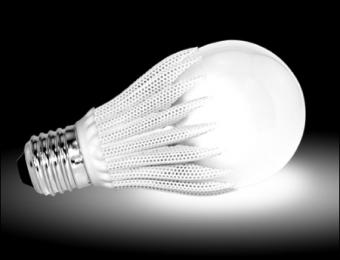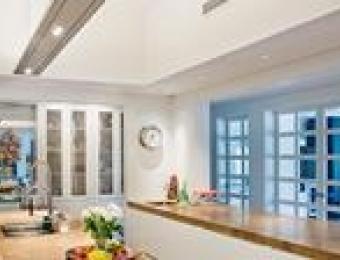These days, it seems like everyone is talking about light emitting diode (LED) technology, especially as people hear more about the bene?ts associated with this environmentally-friendly light source.
What was once used as an indicator light in watches, calculators and electronic devices is now lighting up entire buildings around the world.
Over the years, LED technology has mainly been used for these single colour and multi-colour-changing applications. As the technology continues to advance however, there is a great opportunity to apply the bene?ts of LEDs to general illumination applications that will change light as we know it today.
LED technology is entering the Australian market at a fast pace. At Philips we envisage that by 2020, 75% of the lighting products sold will be LED and we are already well on track to achieve this level of penetration. However, like any new technology, there is a great deal of debate surrounding the advantages, costs and standards.
With LED, the confusion and discussion centres around the claims made about life, output and retrofit capability. Contractors especially are trying to determine the facts so that they can offer lighting solutions that meet their clients’ expectations.
For clients, the allure of LED technology centres on energy efficiency and unique applications. Customers are always looking for ways to reduce both their carbon footprint and costs, especially with increasing power bills.
Using LED light sources in the right application and environment can reduce energy consumption and maintenance costs. Recently we outfitted the Winston Hills shopping centre in Sydney (pictured) with an LED lighting system, with a view to save energy and running costs.
Modern shopping precincts like Winston Hills Mall support a broad range of electricity-dependent processes, including air conditioning, building management systems, communication, security and lighting systems. Prior to the commencement of the upgrade and expansion project, Winston Hills Mall was drawing current at its maximum amperage capacity to accommodate a number of these services.
Unfortunately, the Mall’s existing mains power infrastructure was not be able to maintain this current draw and accommodate the power requirements of the proposed expanded facility. The mall owner had two options: upgrade the mains power feed to the centre at an approximate cost of $1.5 million, or significantly decrease energy consumption in the existing building and new development.
The decision to install a LED system at Winston Hills Mall has resulted in a dramatic reduction in lighting system energy use, a reduction in air conditioning system energy use, no lamp maintenance and instantaneous light. The LED lighting system has also improved the Mall’s interior by creating a crisp, clean atmosphere that is inviting and conducive to shopping.
What you need to know
LED lighting is fundamentally a new kind of lighting, using new principles, materials, and means of control. Electricians are no longer dealing with filaments and electrodes.
LED means that lighting has caught up with the digital age and electricians are now dealing with an electronic light source. In the United States, the Department of Energy has already put manufacturing standards in place for product testing and reporting results, however, the Australian industry is still catching up to this new technology. Although there are currently no standards in place in Australia for LEDs, the Lighting Council of Australia is currently working with industry bodies to establish some.
Perhaps the biggest misconception about LED is also one of its strongest selling points – you save energy and by extension, dollars.
It is important for contractors to understand that energy efficiency doesn’t always mean energy saving. Further, don’t be discouraged by the initial fixture costs that may be higher for some LED lighting solutions than for comparable incandescent and fluorescent lighting projects.
Initial fixture costs do not account for the total cost of owning, operating, and maintaining a lighting system. Because of their long, useful life, LED lighting fixtures avoid the maintenance and materials costs which multiple re-lamping of incandescent fixtures require over tens of thousands of hours of operation.
Because LEDs consume far less energy, annual power costs can be reduced by up to 80%.
The total cost of LED lighting systems, therefore, can be significantly lower than conventional systems. In fact, payback on LED lighting solutions can often be realised in less than one year in instances where lights need to be running 24/7. Although the upfront costs of LED systems are continuing to drop rapidly, the total cost of ownership over the installation should be carefully considered.
To get the most value out of LED, contractors should recommend installation to clients for applications where existing light sources are run for long periods of time or areas where the cost of maintenance would be high like office buildings.
These three tips for electricians can come in handy when considering LED technology.
First, the life of the LED fitting needs to be determined. The life claim made should be stated with the lumen maintenance – 50,000hrs L70. This means that the light source is producing 70% of its initial output at 50,000 hours of operation. Also when considering life, the associated controls need to be taken in account – will it last as long as the LED or will replacement/maintenance be required during the life of the LED?
Secondly, the heat management of the luminaire needs to be specifically designed to ensure heat is moved away from the LED chip. The lifetime rating should also state the maximum ambient temperature the product can operate in. Operating the LED’s in higher than recommended temperatures will have a negative effect on overall life.
Lastly, read the fine print carefully when comparing LED products. Claims made about the efficacy (lumens per watt) can appear very high and are often misleading or erroneous. This rating can sometimes be for the LED chip itself without considering optics, heat management, enclosures, colour temperature and control gear.
Taking an “upskilling” course is always a great way to increase your knowledge, skills and tools to help you meet the growing needs of your customers and provide them with quality lighting solutions that will benefit their business. At the end of the day, clients expect their contractors to be switched on (literally) with technology and practices that will benefit their operations.
Phil Compson is the business unit manager for luminaires and LEDs at Philips Lighting A/NZ .





